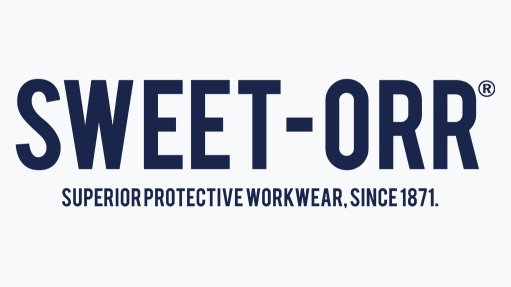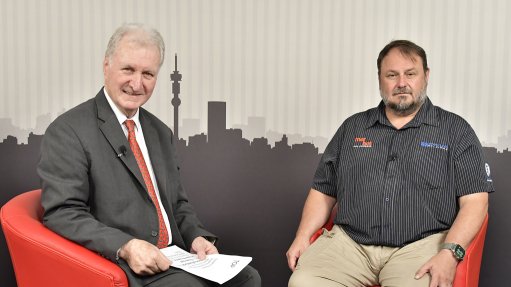Focus needed to maximise S Africa’s export potential


VISHAAL LUTCHMAN Business and government must align and work together to realise South Africa’s export potential
The future of the South African materials handling sector will be impacted on significantly by sub-Saharan Africa development and the ability of South Africa to leverage its export capabilities on the subcontinent, says engineering consultant WSP Africa transport and infrastructure divisional director Vishaal Lutchman.
He stresses that, generally, there needs to be increased focus on designing solutions and implementing initiatives to provide South Africa with an economic mix that will ensure its strength and sustainability in the future. “It is clear to me that we are certain to fail should we maintain the current status quo. Innovation and leadership have to be brought back to the table, and business and government must align and work together to realise our local export potential to ensure future relevance and competitiveness.”
Lutchman points out that, owing to its integral role in moving large quantities of dry bulk from mines to domestic and international markets, the South African materials handling and freight moving industry is a mature one and – as one of the largest employers in the country – pivotal to growth of the gross domestic product and offers the subcontinent a substantial value proposition.
He notes that the sector has attempted to keep up with major global technological advancements, working towards ever-improving efficiencies and capacities with respect to volumes moved each year, energy use, the speed of delivery, door-to-door services with road transport and cost reduction with economies of scale benefits.
“South Africa, moreover, has the best transport infrastructure networks in Africa, with significant investment in the country’s road and rail networks in the past decade having increased the capacity of major and long-haul routes and driven the construction of routes to reach outlying areas.”
He points out that the challenge facing the country, however, is that the cost of moving commodities and products is increasing over time for tonnage per kilometre. This can potentially become a significant operational risk – especially for companies that rely on road transport, owing to the absence of a suitable or more cost-effective rail transport alternative.
Thus, for future growth, Lutchman stresses that it is necessary to focus immediately on factors that are within local control, including sector transformation, energy dependence and environmental pollution, as well as a prioritisation of strategies to increase regional trade volumes.
“As we aim to transform the resources sector to deal with some of the factors within our control, we have the opportunity to incorporate strategies that also encourage growth in other sectors, such as materials handling and logistics, to ensure a balanced portfolio, which is then less susceptible to volatility in commodities markets.”
Moreover, to demonstrate the ability of mining countries to increase trade volumes through rail infrastructure development, Phase 2 of a rail project, in Mozambique, has been completed, linking an opencast coal mine in Tete province to the Port of Beira, about 600 km away.
In 2014, WSP completed a feasibility study, as well as design and construction drawings, for the rail-loading facility, which was initially required to load 100-wagon trains, building up to a loading capacity of 3.5- million tons a year over a three-year period. With a 20-year life span, it was, moreover, proposed that the mining project’s railway siding would be connected to the national railway system and a major portion of the route would be on the recently upgraded line from the Port of Beira.
“Major challenges to the design were the topography, human settlements and the limited size of the land available for the location of the loading facility. Access to the site was extremely restricted and the design gradients were at the limits for a 100-wagon train,” says WSP Africa transport and infrastructure technical director Gavin Higgs.
He highlights that the railway siding was designed to accommodate the build-up of tonnages, with construction planned in three phases. Phase 1 included a single loop for 50 wagons and a run-around loop for the locomotive, with loading by front-end loaders, while the recently completed Phase 2 included a second loop for 50 wagons, increasing the capacity to accommodate 100-wagon trains.
Plans were also prepared to increase the number of trains operating per day to accommodate increased tonnages each year, while provision for a triangle to turn the locomotives ensures safety and efficiency, as it enables the train driver maximum vision of the track.
Phase 3, which has yet to start, includes extending the first loop in a balloon layout so that 100-wagon trains can enter the facility, load from a 7 000 t silo and depart without having to disconnect the locomotives or perform any shunting.
“Strategic developments like this that use key linkages reduce haulage costs and ensure that larger quantities of resources can reach markets in a shorter time. This approach is what is needed throughout Africa to really maximise the export potential of the continent’s valuable mining sectors.”
Article Enquiry
Email Article
Save Article
Feedback
To advertise email advertising@creamermedia.co.za or click here
Comments
Announcements
What's On
Subscribe to improve your user experience...
Option 1 (equivalent of R125 a month):
Receive a weekly copy of Creamer Media's Engineering News & Mining Weekly magazine
(print copy for those in South Africa and e-magazine for those outside of South Africa)
Receive daily email newsletters
Access to full search results
Access archive of magazine back copies
Access to Projects in Progress
Access to ONE Research Report of your choice in PDF format
Option 2 (equivalent of R375 a month):
All benefits from Option 1
PLUS
Access to Creamer Media's Research Channel Africa for ALL Research Reports, in PDF format, on various industrial and mining sectors
including Electricity; Water; Energy Transition; Hydrogen; Roads, Rail and Ports; Coal; Gold; Platinum; Battery Metals; etc.
Already a subscriber?
Forgotten your password?
Receive weekly copy of Creamer Media's Engineering News & Mining Weekly magazine (print copy for those in South Africa and e-magazine for those outside of South Africa)
➕
Recieve daily email newsletters
➕
Access to full search results
➕
Access archive of magazine back copies
➕
Access to Projects in Progress
➕
Access to ONE Research Report of your choice in PDF format
RESEARCH CHANNEL AFRICA
R4500 (equivalent of R375 a month)
SUBSCRIBEAll benefits from Option 1
➕
Access to Creamer Media's Research Channel Africa for ALL Research Reports on various industrial and mining sectors, in PDF format, including on:
Electricity
➕
Water
➕
Energy Transition
➕
Hydrogen
➕
Roads, Rail and Ports
➕
Coal
➕
Gold
➕
Platinum
➕
Battery Metals
➕
etc.
Receive all benefits from Option 1 or Option 2 delivered to numerous people at your company
➕
Multiple User names and Passwords for simultaneous log-ins
➕
Intranet integration access to all in your organisation

















